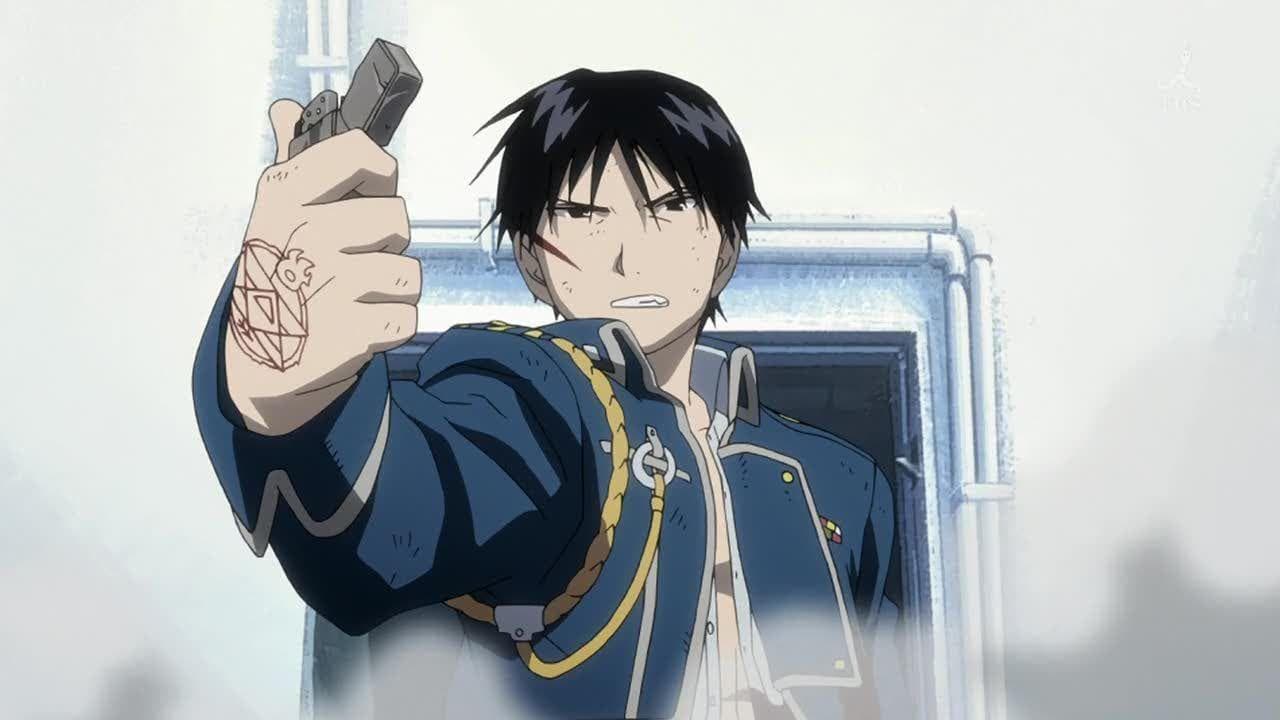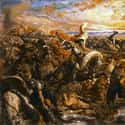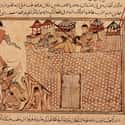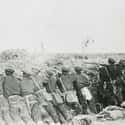-
(#1) Battle of Tours
In the Seventh century C.E., the Umayyad dynasty expanded from Syria and established a Muslim caliphate covering most of the Middle East, Turkey, and North Africa. And at the beginning of the eighth century, the Umayyads set their sights on mainland Europe.
An unstable political situation allowed the Umayyads to establish a foothold in Spain. In 710 C.E., Witiza, king of Gothic Spain, died and set off a succession dispute. Rather than support Witiza's heir, Akhila, the Gothic nobles elected Roderick, Duke of Baetica, to be their ruler. Akhila's supporters reached out to the Umayyad ruler for assistance, and the Umayyads helped them defeat Roderick. But they refused to return to Morocco and controlled most of the Iberian peninsula by 712.
As the Umayyads began to venture eastward into modern-day France, this brought them into conflict with the Frankish kingdom, which was ruled by the Merovingian dynasty. In 732 C.E., Abd al-Raḥmān al-Ghafiqi and his Umayyad army sacked Bourdeaux. Shortly after that, the Umayyads met the Frankish army led by its de facto ruler Charles Martel. The clash came to be called the Battle of Tours.
Today, the exact location of the Battle of Tours is unknown, as is what exactly happened. We know that Charles defeated al-Raḥmān, with either a decisive cavalry charge or a heavy infantry attack. In strategic terms, the Frankish victory stopped the Umayyad advance.
To be sure, losing the Battle of Tours wasn't the only reason the Umayyads stopped advancing - there were also internal political divisions that undermined the effort - but it did represent the furthest expansion by a Muslim army into Christian territory. If the Battle of Tours had gone differently, it's possible that Islam would be the dominant religion in at least some of Europe today.
-
(#2) Battle of Plataea
Even before the movie 300, the Battle of Thermopylae was by far the most famous battle from the wars between Greece and Persia in the fifth century BCE. But in this case, "most famous" doesn't mean "most important." King Leonidas's brave stand against a numerically superior King Xerxes definitely inspired the ancient Greek world, but it didn't significantly slow the Persian advance. Shortly after Thermopylae, Xerxes sacked Athens and established a presence in Greek territory. (Also, Leonidas had quite a few more soldiers under his command than just the 300. It was more like 7,000.)
The real decisive battle in the Persian wars was at Plataea. Soon after defeating the Spartans at Thermopylae, Xerxes suffered a major loss at the naval Battle of Salamis and retreated to Persia. But he left behind a large army led by his general Mardonius, who, according to Herodotus, had goaded Xerxes into attempting the invasion in the first place.
By 479 BCE, the Persians had set up their base in the Greek city of Plataea. That spring, a combined army of Greek city-states that included Sparta and Athens marched to Plataea to confront them.
The Greek army was only about 40,000 men strong, compared with a Persian army that numbered as many as 120,000. (As with all ancient army sizes, these numbers can only be estimated.) But even though the Greeks were outnumbered, they were much better at close-quarters fighting than the Persians, who preferred long-ranged attacks using archers and cavalry. During the battle, disarray in the Greek lines enticed Mardonius to attack, which proved to be a fatal mistake. A Greek counter-attack trapped the over-confident Persians, and the well-trained Greek hoplites routed the Persian formation. Mardonius lost his life in the battle, and Xerxes was never able to mount a serious challenge to Greece again.
-
(#3) Battle of Tsushima
When the Japanese Empire attacked Pearl Harbor in 1941, it brought America into a war to decide who would control the Pacific Ocean. But Japan never would have been in this position without first becoming a naval superpower. And that process culminated 36 years earlier, with the Japanese victory at the Battle of Tsushima.
In the 1600s, Russia had become a power in the West, but it was only beginning to expand into the East. For the next 200 years, Russia encroached on Chinese territory, and in 1858, the instability surrounding the Taiping Rebellion allowed the Russians to seize a large region of China north of the Amur River. This gave them a foothold into the Pacific, threatening the nearby kingdoms of Korea and Japan.
Meanwhile, in Japan, Emperor Mutsuhito, elevated to power above the declining Tokugawa Shogunate, was established as Emperor Meiji in 1867. Meiji abolished feudalism and initiated a series of Western-style reforms, including a new educational system and a modernized military. Japan became a regional power and pursued its own territorial ambitions against China and Korea. By the end of the 19th century, an expansionist Russia and a newly emergent Japan were on a collision course.
When the Russo-Japanese war began in 1904, most Western nations, including Russia, didn't consider Japan a military threat. Japan began the war with a surprise attack on the Russian Port Arthur, then won several more battles. In response, Tsar Nicholas II dispatched his veteran Baltic Fleet, confident it would crush the Japanese. The fleet sailed around the world to the strait of Tsushima, where Admiral Togō Heihachirō’s fleet waited. The faster and better-armed Japanese navy destroyed or captured 30 of the 45 Russian ships, proving to the world that Japan was a military force to be reckoned with.
-
(#4) Battle of Varna
While the Umayyad dreams of expanding their Islamic caliphate into Europe ceased at the Battle of Tours in 732 A.D., seven centuries later the Ottoman Empire fared much better at Varna. This time, the Ottomans defeated a multi-national crusading force and maintained a foothold in Europe for the next century, all while solidifying their burgeoning empire.
When the Ottomans emerged from Anatolia at the end of the 13th century, the time was right for expansion. The corrupt Byzantine Empire that ruled Constantinople was in rapid decline, struggling to defend its shrinking territory. Meanwhile, for much of the 14th century, Europe would be ravaged a by a Black Plague that devastated the population and disrupted the feudal, land ownership-based economy.
Throughout the 1300s, the Ottomans had taken advantage of Byzantine internal political strife to conquer territory in Eastern Europe, culminating with the Battle of Kosovo in 1389, finalizing their conquest of the Balkans. Though the Central Asian warlord Timur Lenk temporarily threatened Ottoman holdings, by the 1430s the Turks were in the ascendant again.
In 1443, Pope Eugenius IV ordered a crusade against the Ottomans, and after the success of the Long Campaign that year, the Christians signed a peace treaty with Ottoman Sultan Murad II. But many European leaders, like the young Polish-Hungarian King Ladislas III, still hoped to push the Ottomans out of Europe and win glory for themselves. Ladislas was advised by the Papal envoy, Cardinal Cesarini, that since this treaty was signed with an "infidel" Muslim sultan, it was nonbinding.
The next year, the weary Murad II abdicated the throne in favor of his 12-year-old son, Mehmed (later "The Conqueror"). Christian leaders felt that an inexperienced sultan was the perfect opportunity to push the Ottomans out of Europe. Ladislas and his allies agreed that he would lead a multi-national force against the Ottomans, consisting of Hungary, Bohemia, Poland, Lithuania, Croatia, Moldova, Wallachia, Serbia, Bulgarian rebels, and Papal forces. The Crusader army met the Ottomans at Varna, a port on the Black Sea. The force was commanded by Ladislas and the Hungarian warlord John Hunyadi.
Meanwhile, Mehmed brought his father out of retirement to lead the army. The Crusaders had planned to use the Venetian navy to blockade the area and prevent the Ottomans from bringing in reinforcements, but crucially, Mehmed brokered a deal with the Venetians' rivals, the Genoese, to bring in his troops.
The day of the battle, Murad II used a false retreat to entice Ladislas into attacking his position directly. The Crusaders smashed into the Ottoman lines, and at first it seemed like they would break through. But the Ottomans encircled them and their elite Janissaries cut down the knights. Ladislas was beheaded.
The battle had major implications for both sides. Poland had no king for the next three years, and losses were so heavy that it would be several more years before Eastern Europe could mount another attack. As for the Ottoman Empire, defeating their main European rival allowed them to conquer Constantinople and end the Byzantine Empire.
-
(#5) Battle of Ain Jalut
The Mongol Empire was one of the greatest military powers the world has ever known. Using his devastating horse archers, Genghis Khan had managed to conquer most of China, Central Asia, and Persia by the time of his passing in 1227. When he passed, it looked like his empire was poised to conquer not just the remaining steppe peoples, but the known world. But 34 years later, an army of enslaved soldiers finally proved the Mongols weren't invincible, and saved their civilization in the process.
In 1251, the new Great Khan, Genghis's son Mongke, ordered his brother Hulagu to finally expand outward from Persia and conquer the remaining Islamic nations in the Middle East and North Africa. Seven years later, Hulagu's forces took Baghdad and executed its caliph, an important symbolic demise that symbolized the end of the caliphate. Hulagu next took the Levant and set his sights on the Egypt, the last major Islamic nation that was controlled by the Mamluks.
A century earlier, the Mamluks had primarily been an elite military force consisting of enslaved soldiers - one that was so respected that some Egyptian parents sold their children into slavery so they could earn the honor of enlisting. They played a major role in helping Saladin repel the Christian Crusades, and over the next century, they eventually became the ruling class in Egypt.
Hulagu sent emissaries to the Mamluk sultan, Quduz, demanding unconditional surrender. But then fate intervened. Hulagu's brother Mongke perished and set off a succession dispute, forcing Hulagu to take the majority of his army to Azerbaijan in case he needed to intervene back home. He left behind a still-formidable force of 20,000 Mongol soldiers.
The Mongols and their new commander, Ked-Buqa, met the Mamluk army at Gaza. During the battle, the Mamluk general Baybars executed a plan that many military commanders have found successful since: using the enemy's favored tactic against them. Baybars ordered a feigned retreat to draw in Ked-Buqa's forces, then fired down on them from three sides until the Mongols were forced to retreat.
Both sides endured heavy losses, but the Mongols fell back to their stronghold in Persia. They would never again seriously threaten the Middle East. As for the Mamluks, Baybars leveraged his success to assassinate Quduz and take power for himself. He established positive diplomatic relationships with many European and Middle Eastern powers and ensured that Mamluk Egypt survived.
-
(#6) Battle of Castillon
In the 21st century, most people know the British Empire as a predominantly naval power that ruled more territory around the world than any predecessor. But during the Middle Ages, England's imperialist aims were more local. Starting in the 12th century, England repeatedly invaded French territory and controlled several fiefdoms on the French mainland, which it used as a power base to threaten the French throne for the next 300 years. It all ended with the the Battle of Castillon. The battle was the culmination of the Hundred Years' War, which began in 1337 C.E. following the French conquest of the English duchy of Guyenne. (But fighting had been going on for decades before then.)
In the middle of the 15th century, England was ruled by the Lancastrian King Henry VI. Internal conflicts between the Lancasters and their rivals, the House of York, as well as Henry's mental health issues, weakened England's ability to defend its foreign territories. The French King Charles VII took advantage of the situation, sacking English-held Bordeaux in 1451. In response, the English dispatched an army led by John, Earl of Shrewsbury, who retook Bordeaux in October 1452. The next summer, the English and French armies met near the English fortress of Castillon.
During the ensuing battle, Shrewsbury, mistakenly believing the French camp was undefended, attacked without the cover of his artillery. Charles returned and fired with his own cannons, and the English army was slaughtered - including Shrewsbury. Not only did the battle strip England of all their French territories except the port of Calais, it also proved the effectiveness of gunpowder artillery (still a relatively recent invention). Following Castillon, England descended into a bloody civil war known as the War of the Roses. England never again tried to conquer the European mainland, instead focusing its imperial ambitions on the New World.
-
(#7) Battle of Yangxia
Most of the battles on this list were decisive because they allowed the winning side to achieve their political goals. The Battle of Yangxia is different. Even though the Qing dynasty technically won the battle, they lost the war in the ensuing negotiations.
In 1911, the ruling Qing dynasty had been in steady decline for centuries, thanks to recurring food shortages and a willingness to allow foreign countries to establish markets within China. So when they decided to nationalize the country's railroads and give control to foreign banks, it sparked the 1911 Revolution, the goal of which was to overthrow Qing rule and establish a Chinese republic. The revolutionaries, led by Sun Yat-sen, were poorly armed and trained compared to the Qing military, but they captured the cities of Hankou and Hanyang. This inspired more to join the effort.
The Qing dynasty and its 6-year-old emperor Puyi were forced to turn to General Yuan Shikai for their rescue. Yuan had formed the powerful Beiyang Army, China's first Western-style armed force, and had become one of the most influential figures in the Chinese government. But Yuan's growing power concerned Qing officials, and following the passing of the dowager Empress Cixi, Yuan was forced into retirement. Now, however, the Beiyang Army was Qings' only hope of suppressing the rebellion. Yuan was put in command of the Qing forces and ordered to retake the cities.
During the ensuing 41-day Battle of Yangxia, Yuan did retake Hankou and Hanyang. But the resistance from the revolutionaries inspired more provinces to declare independence from the Qing dynasty. Realizing the revolution was far from suppressed, and that if he did suppress it his usefulness to the Qing dynasty would end, the ambitious Yuan agreed to a ceasefire and entered negotiations with the revolutionaries.
Rather than assert Qing rule, Yuan instead agreed to allow Sun Yat-sen and the revolutionaries to establish the Republic of China - with Yuan as its president. In exchange, Puyi was forced to formally abdicate the throne. Dynastic rule in China had ended after 2,000 years. But the fragile and unstable Republic of China would itself last for only about three decades before it too fell to the Communist Revolution, with an assist from Japan's ruthless invasion of the 1930s.
-
(#8) Battle of Boyacá
Many historical battles involve feats of individual brilliance and bravery, the kind that military scholars study for generations. Other battles are significant more because of their larger context in geopolitics. The Battle of Boyacá Bridge was both memorable and crucial to the history of South America.
By the time of the battle, Venezuelan revolutionary Simón Bolívar had been fighting to liberate the Spanish-held colonies of South America for nine years, with temporary success. He had liberated and lost Venezuela twice, and in 1815 Spain sent its strongest commander to quell the revolt. Finally, in 1819, Bolivar set out from his capital in Angostura, (now Ciudad Bolívar in Venezuela), with a few thousand soldiers, hoping to take Bogotá, the capital of New Grenada (now Colombia).
Bolívar's plan was as reckless as it was daring. His men first had to march through the plains during the rainy season, which meant walking through flooded areas for days at a time. But that was nothing compared with the next phase: climbing the Andes mountains, where high altitudes create fatally frigid temperatures. Bolívar and his men managed to complete this treacherous and exhausting journey and take the royalist Spanish forces by surprise at the Boyacá Bridge, defeating an evenly sized force. Bolívar immediately declared New Grenada the independent Republic of Colombia, with himself as president and military dictator.
The victory at Boyacá Bridge gave Bolívar and his revolutionaries a foothold to continue the fight for independence. In 1825, Spanish rule in South America ended, and the continent was broken up into several new republics. Bolívar spent his remaining years attempting to unite these nations, which led to civil war and strife. His dream of a single, consolidated South American republic - a counterpoint to the United States in the North - never materialized.
-
(#9) Second Battle of the Marne
Although it's popularly viewed as a defensive stalemate, WWI had its share of turning points - like the Second Battle of the Marne, which not only decided the outcome of the war, but also changed the world's political dynamics for the next century.
After the French stopped the German advance on Paris at the First Battle of the Marne in 1914, the Germans employed a mostly defensive strategy on the Western Front while pouring manpower into the East. Three years of bloody stalemates followed, taking millions of lives on both sides.
Then the Bolshevik Revolution toppled the Tsar in 1917, ending Russia's participation in WWI and giving German commander Erich Ludendorff a small window of opportunity. He could now devote all his forces to the Western Front and mount another assault on Paris. But America had recently entered the picture, and newly arriving American troops would neutralize the German advantage. Ludendorff decided on an invasion through the Flanders region to capture the Marne River, which would open a path to the French capital.
On the Allied side, French, British, and Italian troops held the line but were exhausted after years of fighting. The newly arrived American Expeditionary Force bolstered the Allied lines with 250,000 men, but they were inexperienced and in some cases even unequipped. In order to participate, the Americans reluctantly agreed to join the line under French command.
Aware of the impending German attack, the Allies had time to prepare. French commander Philippe Pétain build a series of "decoy" defensive fortifications, trenches that were nearly undefended. Ludendorff began the Second Battle of the Marne by pouncing on the enticing target, only to realize the actual Allied defensive line was miles ahead. The Germans advanced under heavy artillery fire and attacked the Allied lines. But the Allies, including the AEF, held fast and began a counter-offensive. The Germans surrendered a few months later.
The Second Battle of the Marne was the beginning of the end of WWI But it was even more significant because the Americans - untried in European warfare up to that point - proved they could compete against one of the world's strongest military powers. After the battle, the Allies permitted the AEF to operate independently under the leadership of General John Pershing. Second Marne also established a precedent for intervention in overseas conflicts, especially European wars, that has defined American foreign policy ever since.
-
(#10) Battle of Moscow
Today, the Battle of Stalingrad in 1942-43 is considered the turning point in the Eastern theater of WWII, when Soviet forces finally stopped the German advance and began the long march to Berlin. But if things had gone differently outside Moscow one year earlier, the Battle of Stalingrad likely never would have happened.
Starting with the invasion of Poland in 1939, the German war machine seemed unstoppable, using the Pervitin-fueled blitzkrieg to surprise and confuse Allied commanders and conquer most of mainland Europe. When Hitler launched Operation Barbarossa against the Soviet Union in 1941, at first it seemed like another inevitable German victory.
Beginning in June, the Wehrmacht pushed hundreds of miles into Soviet territory, taking major cities like Minsk and Smolensk and capturing hundreds of thousands of Soviet troops. By September, the Germans had a clear path to Moscow. If they had committed all their forces to attacking the Soviet capital, it's possible they would have irreparably damaged Stalin's government.
Instead, Hitler made the crucial decision to divert some of his forces to attacking other strategically important Soviet cities like Kiev, munitions-producing Stalingrad, and the vast oil fields in the Caucasus region. These delays pushed back the beginning of Operation Typhoon, the code name for the attack on Moscow, to October, the beginning of the inhospitable Russian winter. On October 7, melting snow turned the roads into an impenetrable muddy quagmire, slowing the German advance, which had already been plagued by logistical problems from the beginning of Barbarossa.
The delays gave the Soviets time to fortify Moscow with fresh elite troops from Siberia and the Far East. After the Wehrmacht had come within five miles of the Soviet capital in December, the Soviets eventually pushed them up to 160 miles west. By failing to defeat the Soviets in 1941, the German were eventually forced to fight a war on two fronts, draining their manpower and resources and leading to their downfall. (Of course, the entry of the United States into the conflict in December 1941 didn't help matters.)
-
(#11) Battle of Zama
- Military Conflict
The Carthaginian commander Hannibal is still remembered as one of the most brilliant military strategists of all time, and his accomplishments during the Second Punic War are still admired today: he guided an army that included war elephants over the treacherous Alps so he could launch a devastating surprise attack on Northern Italy; he terrorized the Romans in their own territory for over a decade; and at the Battle of Cannae in 216 BCE, he encircled and slaughtered the Roman army. This defeat shocked and humbled the Romans, who considered themselves the Mediterranean's dominant military power.
But as impressive as Hannibal's victories were, the Carthaginians still lost the war. The truly decisive battle of the Second Punic War was the Roman victory at Zama. In the years following Cannae, the Romans had struggled to stop Hannibal on their own soil. So the Roman general Publius Cornelius Scipio gave Hannibal a taste of his own medicine, launching a surprise invasion on the Carthaginian homeland in 203 BCE. This forced Hannibal to withdraw his entire army from Europe to defend Carthage. Crucially, Hannibal couldn't bring his cavalry horses back to Carthage, and he had to slaughter them. Meanwhile, the Romans formed an alliance with the Numidian king Masinissa, who commanded a powerful cavalry force of his own.
Hannibal arrived with an army about the same size as Scipio's, about 40,000 strong. But lacking adequate cavalry and the ability to chose the site of the battle, Hannibal's fortunes were reversed. Scipio spread out his formation to neutralize the effect of Hannibal's war elephants, and the Roman forces and their Numidian allies destroyed most of the Hannibal's army. Hannibal lost Carthage, and the Romans went on to establish an empire.
-
(#12) Battle of Red Cliffs
At the beginning of the second century C.E., China had mostly been ruled by a series of dynasties that controlled the nation via a centralized bureaucracy. But that changed following the Battle of Red Cliffs, a turning point in Chinese history.
At this point, the Han Dynasty had ruled China for about 400 years. But for decades, the Hans had allowed their government to fall under the influence of court eunuchs, which led to corruption and instability. This sparked the Yellow Turban Rebellion in 184 C.E., a popular uprising that forced Han leadership to rely on powerful generals to restore order. But empowering these generals allowed them to become autonomous and establish their own fiefdoms. In 195 C.E., the Han Emperor Xian nominally ruled northern China, but he was effectively a puppet of the powerful warlord, Cao Cao.
In 208 C.E., Cao Cao had consolidated his hold on most of northern China and decided to march south to unify the nation once again. He had amassed an enormous army. He claimed it was 800,000 strong, but it was most likely about 250,000 - still huge for the time, and enough to dwarf the combined forces of a coalition of southern warlords led by Liu Bei and Sun Quan. Victory seemed guaranteed. But in order to win, Cao Cao needed to control the strategically important Yangtze River, and most of his troops were inexperienced in naval warfare.
The armies met at the port city of Jiangling, and Cao Cao won the first several skirmishes. But then, a southern commander named Huang Gai came up with a ruse: he would pretend to surrender his fleet to Cao Cao and, once his ships were close enough, set them on fire and crash them into Cao Cao's fleet. Cao Cao fell for it, his fleet was destroyed, and he retreated to his northern stronghold.
Cao Cao's retreat brought about the Three Kingdoms period, a time of intra-national warfare and instability not seen since the Warring States period centuries earlier. China would remain a divided nation for 60 years, until the Jin Dynasty finally brought the nation under its control.
New Random Displays Display All By Ranking
About This Tool
There have been many tragic wars unprecedented in human history, and many important wars have profoundly changed the pattern of the world. When it comes to the turning point of modern society, we have all learned some knowledge about World War II and modern world history in history classes. From the perspective of social development, some countries may have won the battle, but they have not won the war.
On many occasions in history, battles have been decisive for participating countries. The random tool introduced 12 important battles in history that changed the course of our lives today, but few people know these historical events.
Our data comes from Ranker, If you want to participate in the ranking of items displayed on this page, please click here.






















